Built at the same factory, this German and Japanese share much in common, but they’re quite different in character. What unites them, in the end, is the sheer pleasure of driving!
This story begins with a Japanese, a German and an Austrian. The Japanese asks the German to loan him something so that he can build an item that’s very dear to him. The German sees it as an opportunity to share the cost of building something that he, perhaps, would have built anyway. Pleased, the Austrian rubbed his hands and helped them both realise their dreams.
Now, the aforementioned narrative isn’t a joke. In fact, it’s a remarkable, contemporary tale of synergy between modern manufacturers – Toyota exhumes the Supra after decades, BMW shares its famous in-line six engine and platform, amongst other bits, and Magna Steyr assumes the assembly operations and brings both together.
It’s remarkable to see a manufacturer, or two in this case, committed to offering true pleasure of driving in an industry that’s otherwise investing largely in electric cars, autonomous driving and a reduction in emissions. If that doesn’t put a smile on the faces of those of us who have a passion for proper driver’s cars, I don’t know what will.
So, those (purists) who frown upon the exchange of components between manufacturers, must examine their conscience. For, without this collaboration with Munich, the Supra wouldn’t have been born.
Of course, to completely understand this Japanese sportscar, you must reset your mind and get rid of any preconceived notions. Why? Because it’s no longer the Supra of the past – the one of the 90s went up against the Porsche 911 and Ferrari 348, while the Supra of today has ambitions that are a tad bit more modest – in this case, it’s targeting the 718 Cayman. But, more importantly, there’s no escaping the fact that the new Supra is basically a BMW branded Toyota – right from the ignition key to the steering wheel (the first two things you take in your hand as you enter the vehicle for the first time), both are signature BMW pieces, but with Toyota badging in this case.
So, if you’re not too set in your ways, and you can take something for what it really is, then you could really enjoy this German hardware enclosed in a very original body, which exudes Japanese culture from its every pore.
Marriage of convenience
At the heart of this story lies the fact that one of the key components of the new Supra has always been the in-line six-cylinder engine. After the end of the indestructible ‘straight six’ of the JZ series, Toyota had no choice but to knock on the doors at Munich for this architecture.
The talk of a partnership between these two manufacturers began in 2012 – with a memorandum to collaborate on the electric front too – but turned into a reality only after several years, and not without delays and lots of rethinking.
But the good news is that today, almost at the same time, these siblings with very different upbringings have arrived at dealerships around the world – the new Z4 has already been introduced in India, but (unfortunately) it’s highly unlikely that we’ll ever see the Supra on our roads. The important and arduous task now is to understand the difference between these two. And the difference lies not so much in terms of technicalities, but more so from an emotional point of view.
The curious case of the roof
The biggest difference between the two may seem trivial, but it’s not – it’s their body-type. One is a convertible and the other a coupé. This very obvious difference also minimises the risk of cannibalisation between the two. So, it’s safe to say that the Z4 competes with the open-top Porsche Boxster 718, while the Supra takes on the hardtop Cayman 718 instead.
In terms of price, the Z4 is about 1,100 Euros less than the Supra, but the latter boasts of a more complete equipment list – 19-inch wheels, driver assistance packages, electric and heated seats, just to mention a few. The only limitation in the case of the Toyota is that there’s zero possibility of customisation, whereas the BMW has no such limitation – except, of course, your wallet.
Now, when you push the respective start-stop buttons of this pair of (not exactly identical) twins – anxious to find out their characters – you can’t help but be confused. You see, to tell the truth, it’s very difficult to distinguish one from the other. In both cases, the unmistakable sound of the 6-cylinder turbocharged engine pleasantly penetrates the cabin without any difference in tone or character. On both the Z4 and Supra, torque is available at low revs and power delivery is strong at medium and high revs. The net acceleration, however, is lightly more favourable in the Supra because of its lower weight. Even the gearbox – the excellent eight-speed torque converter – responds in a very familiar manner. It’s equally punctual, precise and quick in both cars.
In terms of steering, both cars are precise at small angles, progressive and offer brilliant feedback. The Supra, however – but only if we’re splitting hairs – offers slightly less accurate feedback.
The difference in their characters emerges slowly with an increase in speed. It’s only then that the superior ‘sporty’ nature of the Supra that the Japanese technicians wanted to give it becomes evident. The response of its setup is more decisive, while the comfort remains acceptable. This aspect of the car, together with a greater overall rigidity – an effect of the closed bodywork – makes the car more stable.
This peculiarity becomes more prominent on the track, where the tyres also behave differently, even though they are of the same size but not brand. Initially, the BMW has a tendency to understeer, but then progressively it oversteers while both entering and exiting corners. The Toyota, on the other hand, always remains balanced, something that’s also evident during our stability tests.
Despite these differences, there’s one thing that unites both these cars – driving pleasure, something that remains high in both cases, thanks to a well-developed technical package. So, essentially, the difference between the two comes from really nothing other than their different packaging.
BMW Z4
The dashboard of the Z4 is more desirable in terms of design and the materials used in the cabin.
1. It features a 10.3-inch screen that has become common in recent BMWs
2. There's the optional Live Cockpit Professional system with a 12.3-inch display
3. The control panel has buttons for driving modes and a knob for the infotainment system
4. The door panel is covered with high-quality materials, and there's also a Harman Kardon HiFi system
TOYOTA SUPRA
Even in the passenger compartment, the Supra has a distinctive, well-defined design.
1. The gear lever is a direct lift from previous generation BMWs
2. Much of the switchgear is from BMW, but the audio system is JBL
3. The instrumentation is specific, with a large rev counter in the centre
4. The display allows you to choose custom profiles
THE BOOT
| BMW | ||
| Total capacity (litres) | 261 | |
| Under-seat storage | - | |
| Loading height threshold (cm) | 72 | |
| Toyota | ||
| Total capacity (litres) | 218 | |
| Under-seat storage (litres) | - | |
| Loading height threshold (cm) | 84 | |
With the exception of the different bodies, styling and differently tuned driving dynamics, both cars were more or less identical during our test. And that’s hardly surprising considering this collaboration – a collaboration that made it possible for Toyota to resuscitate one of the icons of its past. Beneath their distinct appearances, both cars have the same underpinnings – a 3.0-litre six-cylinder turbocharged engine, an eight-speed ZF automatic transmission, rear-wheel drive and close to perfect weight distribution (although despite the claimed perfect weight balance, we found a slight load prevalence at the front axle – but only slight). The only problem is the front suspension, which doesn’t seem ideal for driving precision – instead of a double wishbone, these cars come with a simpler MacPherson setup. The rear axle, on the other hand, is the more sophisticated multi-link axle. The presence of an active self-locking differential ensures great agility on both cars. Also, depending on the situation, both allow torque to be distributed between the rear wheels so as to correct under- or oversteer without any loss of traction.
Apart from added stiffness – a consequence of the coupe body – the Supra also differs from the Z4 in terms of its unique setup, which has been tuned by Toyota’s technicians after multiple racetrack tests. The engine boasts of direct injection at 350 bar, variable intake valve lift, which improves performance at low loads, and a twin scroll turbocharger, which optimises the use of exhaust gas energy.
Both the Z4 and Supra are produced in Austria by Magna Steyr.
SPACE & VISIBILITY
Z4
The cabin offers adequate space for two people, both in width and in height. The three-quarter view from the rear is limited by the roof.
SUPRA
The internal dimensions of the Supra are basically the same as those of the Z4. The rear visibility is critical here because of those massive pillars.

- BMW Z4
- Toyota Supra
Engine: 2,998cc / 6-Cylinder In-Line / 2 Overhead Camshafts / Double Phase Variator / Variable Intake Valve Lift / 4 Valves Per Cylinder / Direct Injection / Turbocharger and Intercooler / Particle Filter
Fuel: Petrol
Power: 335bhp @ 5,000rpm
Torque: 500 Nm @ 1,600 - 4,500 rpm
Transmission: 8-Speed Automatic Transmission / Rear-Wheel Drive / Differential with Active Torque Transfer
Tyres: Dunlop Sport Maxx RT Front – 255/35ZR19 96Y Rear – 275/35ZR19 100Y Repair kit
Body: Steel body with aluminium parts, convertible, 2 doors, 2 seats / MacPherson front axle with double joint, helical spring, anti-roll bar / Multi-link five-lever rear axle, coil spring, anti-roll bar / Electronically controlled hydraulic shock absorbers / Self-ventilating disc brakes, ABS and ESP / Rack and pinion steering, electric servo control / 52-litre tank
Dimensions and Weight : Wheelbase – 2,470mm, Front & Rear Track Width – 1,590mm, Length – 4,320mm, Width – 1,860mm, Height – 1,300mm, Boot – 281 litres, Produced in – Graz (Austria)
Engine: 2,998cc / 6-Cylinder In-Line / 2 Overhead Camshafts / Double Phase Variator / Variable Intake Valve Lift / 4 Valves Per Cylinder / Direct Injection / Turbocharger and Intercooler / Particle Filter
Fuel: Petrol
Power: 335bhp @ 5,000rpm
Torque: 500 Nm @ 1,600 - 4,500 rpm
Transmission: 8-Speed Automatic Transmission / Rear-Wheel Drive / Differential with Active Torque Transfer
Tyres: Michelin Pilot Super Sport Front – 255/35ZR19 96Y Rear – 275/35ZR19 100Y Repair kit
Body: Steel body with aluminium parts, coupe, 2 doors, 2 seats / MacPherson front axle with double joint, helical spring, anti-roll bar / Multi-link five-lever rear axle, coil spring, anti-roll bar / Electronically controlled hydraulic shock absorbers / Self-ventilating disc brakes, ABS and ESP / Rack and pinion steering, electric servo control / 52-litre tank
Dimensions and Weight : Wheelbase – 2,470mm Front and rear track width – 1,590mm Length – 4,380mm Width – 1,850mm Height – 1,290mm Boot – 290 litres Produced in – Graz (Austria)

© Riproduzione riservata
Also read -



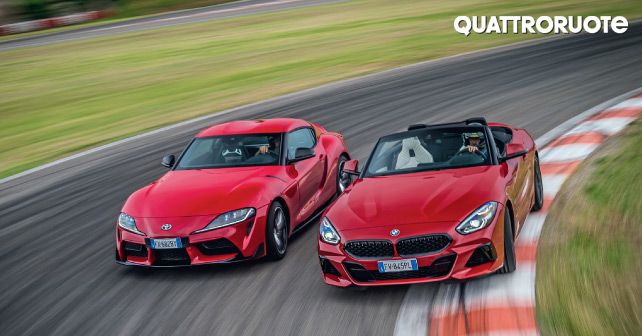
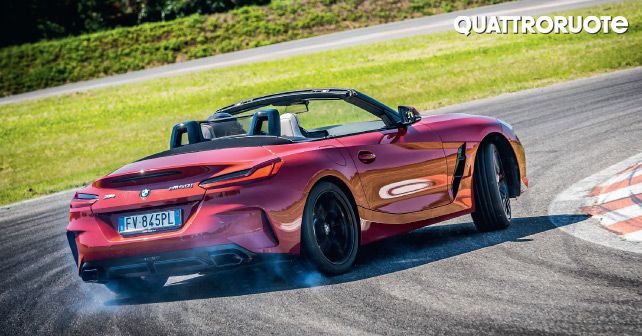
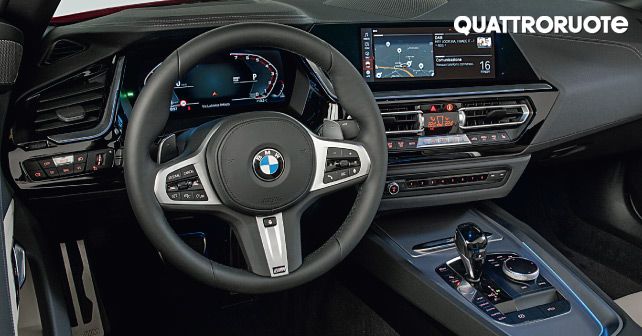







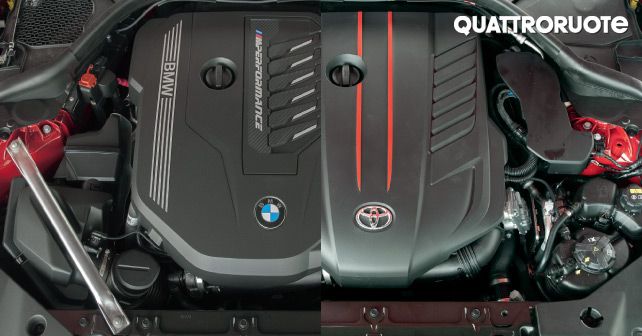







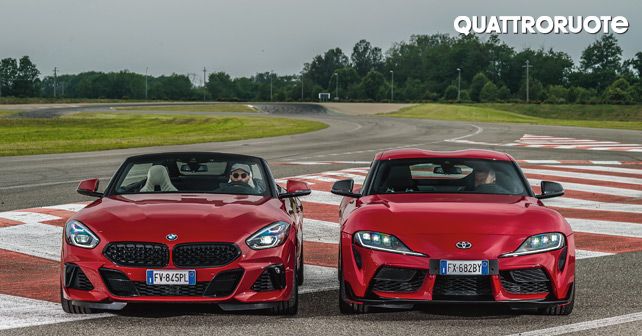




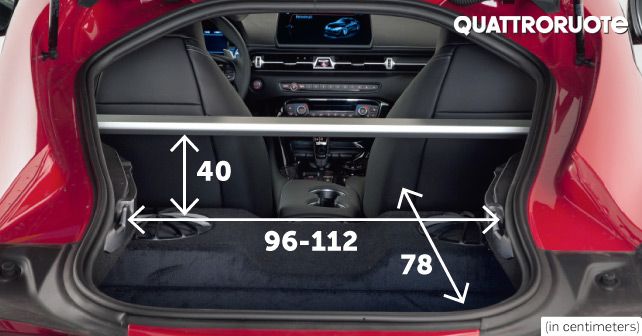







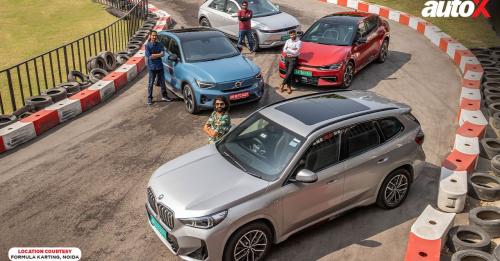

















1 Comment
Thanks for the share.
Reply